How to Shift from Reactive to Proactive Fleet Maintenance
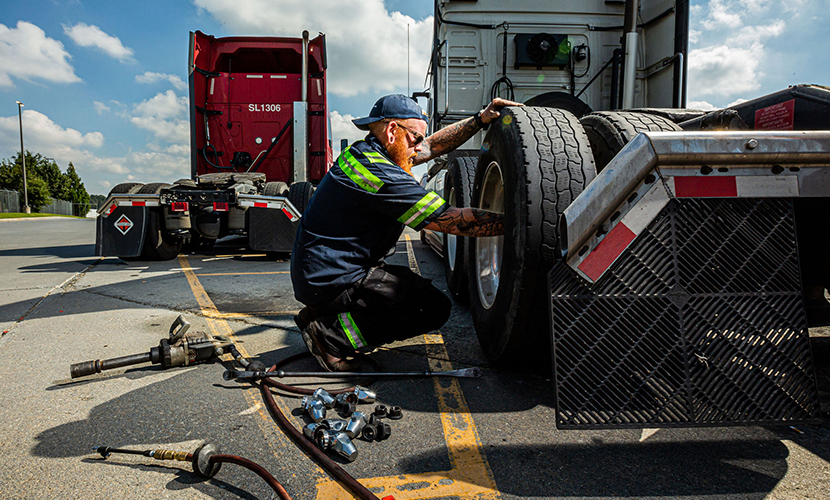
You’ve probably heard the phrase, “An apple a day keeps the doctor away.” The aphorism is meant to represent the fact that taking care of yourself proactively will prevent doctor visits from built-up, unaddressed problems; in other words, proactive maintenance versus reactive repairs.
The same holds true of fleet vehicles. Consider the humble tire: It’s faster, easier, and cheaper to replace worn tires in between dispatches than it is to have to fix a blow-out on the side of a highway, right?
Reactive maintenance, or reactive repairs, is when you wait until something breaks to address the problem.
Whether it’s worn-down tires, loose couplings, failing electronics, or an engine about to blow, it’s chaotic, unpredictable, and often expensive. Fleet managers often feel like these things come in waves, and once one thing breaks, everything around them starts failing, and the list of necessary repairs becomes mountainous.
Proactive maintenance periodically inspects and maintains fleet vehicles according to schedules.
Even little things like tightening bolts on mounts, changing the oil, and running through a comprehensive inspection sheet can make a huge difference.
After all, it’s a lot cheaper in both money and time to perform regular oil changes than it is to fix an engine that seized.
All of this is, while not necessarily “common sense,” at least something that most fleet managers understand in concept. The trick is actually putting that concept into practice.
Understand Your Current Maintenance Plan
It’s easy in concept to say you should shift from reactive to proactive maintenance, but the truth is, it’s rarely so cut and dry. Maybe you have part of a proactive maintenance schedule in place but have fallen far enough behind that you’ve ended up mostly reactive. Maybe aging fleet vehicles and a new contract that’s exceptionally difficult on them are both leading to more failures that need reactive repairs, and the proactive maintenance doesn’t keep up. Maybe, on paper, you have a proactive plan, but poor configuration, poor communication, and institutional hand-waving have let it slip.
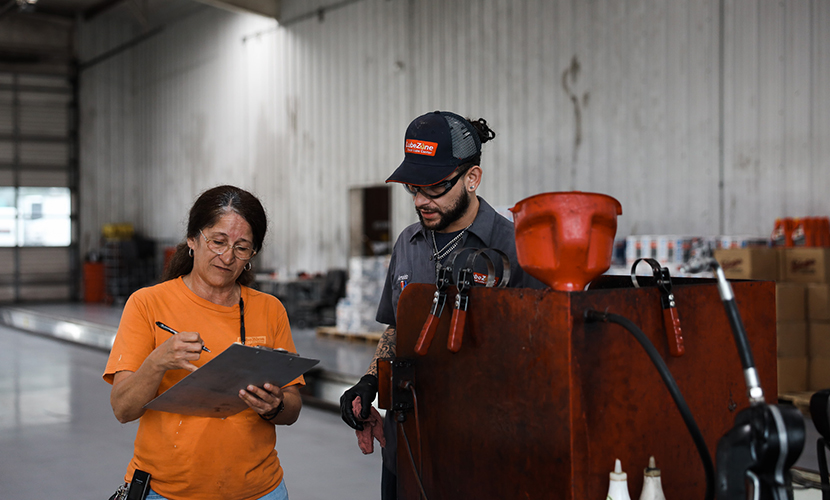
Part of a proactive maintenance plan is building investment in the maintenance of your fleet. This isn’t just from your mechanics; it’s from your drivers, from your management, and from your clients. It’s a fact of life that not every vehicle is going to be in service 100% of the time; if there are punitive penalties from management towards drivers who “take time off” for maintenance, it will only exacerbate problems.
Further, it’s unrealistic to try to eliminate all cases of reactive repairs. We live in a chaotic world where the unexpected happens all the time. Parts can have critical failure points that no one could foresee, and it’s just something that needs to be taken as it happens.
One of the benefits of proactive maintenance is a much shorter repair queue, so such catastrophic issues can be handled much more quickly.
Build a Comprehensive Maintenance Checklist
It’s not enough to know that you should be performing regular maintenance; you need to know what maintenance needs to be performed. While the broad strokes are the same across every fleet – oil changes, tire condition, other fluids, electronics – some specifics will vary.

Special considerations can include:
- Special attention to batteries, especially for hybrid and electric fleet vehicles.
- Special considerations for diesel engines over other kinds of engines.
- Adjustments to the maintenance schedule to account for the age of a vehicle.
- Specific inspections to comply with DOT or other regulations, like emissions.
- Scheduled reassessments of the specific schedules for individual vehicles based on usage.
There’s no such thing as a one-size-fits-all inspection and maintenance checklist. Even if your fleet is all one type, brand, and configuration of the vehicle, each one will be unique in terms of usage levels, wear patterns, and more. Even different drivers treating vehicles differently within their limitations can mean different wear patterns for similar vehicles.
Build as standardized a checklist as you can, but build supplements and special instructions for individual vehicles as necessary so all of your bases are covered.
Don’t Forget Unique Stresses
There are a range of different unique factors that can put stress on specific parts of a fleet vehicle and require special inspections, more frequent attention, or more frequent replacement.

Examples can include:
- Fleet vehicles that travel in winter areas may need to deal with extra corrosion from road chemicals, and batteries are more susceptible to cold weather issues.
- Fleet vehicles hauling extra-heavy loads put additional stress on shocks, struts, linkages, and more.
- Heat issues in very hot areas can exacerbate problems with cooling systems for both the engine and the driver.
While these issues tend to be consistent across a whole fleet when your fleet is operating entirely in a given city or area and entirely within one industry or purpose, larger companies with multi-state or national fleets or multi-purpose fleets can see a lot of variance in wear across different types of vehicle purpose and location.
Gather Information from Drivers
There’s a phenomenon in many careers where an individual will adapt to stresses and circumstances that develop slowly, considering their personal issues rather than larger concerns.
In fleets, this most often comes up with drivers who see “minor” problems that they need to address and start addressing them rather than reporting them to maintenance. Often, this decision is spurred on by management or other pressures that equate downtime to a loss of income or other penalty.

In other words, drivers may be performing small maintenance tasks themselves rather than report an issue that would require some amount of downtime but fix the issue entirely because that downtime is a worse penalty than the seemingly minor hit to their day.
- A driver finds they routinely need to add some air to their tires each morning or risk a flat in the evening. Unfortunately, they don’t realize that a tire swap is comparatively easy, while deferring it leads to undue stress on wheels, brakes, and other parts of the truck that could fail much more catastrophically later.
- A driver suffers from HVAC failure, relying instead on battery-powered fans, windows rolled down, and other means of comfort. What they don’t know is that the electrical problem causing the issue could be much more dangerous down the line, especially if it leads to a fire in the instrument cluster or elsewhere. (This can be even worse if the driver knows enough to bypass a fuse, but not why that’s a terrible idea.)
Thus, a critical aspect of shifting from reactive maintenance to proactive maintenance is transparency with drivers. It’s essential to know all of these seemingly minor gripes, both so that they can be fixed for comfort, efficiency, and stress reduction on the driver and so that they can alleviate worse issues down the line or be used as symptoms to identify a larger underlying cause.
Transparency and responsiveness to the issues drivers experience can also be a key aspect of driver retention.
Track and Address Recalls
Recalls can be an unexpected yet critical aspect of proactive maintenance. Some recalls are both minor and voluntary, like a cracking dashboard panel that doesn’t hurt anything but cosmetics. Others can be significant, like dangerous airbags, power steering failures, and more. Tracking recalls and making sure they’re applied to your fleet vehicles is critical.

Normally, recalls are delivered to your company by mail and notification from the NHTSA and from manufacturers. However, you’re not limited just to waiting for those notifications.
“Through a proactive fleet management strategy, fleet managers can get the recall notifications earlier. You can take the proactive approach by checking NHTSA’s online recall database or consulting with your fleet management company for any recall news of vehicles you think might be affected.” – Wilmar.
Being proactive with recalls is just another element of proactive maintenance.
Leverage Data Analytics
Data analytics has become a game-changer in many industries, and fleet management is no exception. By collecting and analyzing data on vehicle performance, fleet managers can transition from reactive to proactive maintenance more effectively.
Before you can harness the power of analytics, it’s essential to set up data collection systems. Most modern fleet vehicles come with in-built telematics systems that can provide a wealth of information, from GPS location to engine temperature and fuel usage. Make sure these systems are enabled and that data is consistently recorded and transmitted to a centralized system for analysis.
Once you have a data collection system in place, the next step is to identify KPIs that are relevant to vehicle maintenance. Examples of KPIs include average fuel consumption, tire pressure levels, brake pad wear, engine temperature, and many others. Monitoring these KPIs can offer insights into how well the vehicle is functioning and what may require attention before it becomes a problem.

By examining patterns and trends in the collected data, you can predict when a particular vehicle component is likely to fail. For example, if the analysis shows that brake pads usually require replacement after 50,000 miles, you can schedule proactive maintenance when a vehicle approaches this mileage, thus avoiding potential brake failure and enhancing road safety.
Advanced analytics tools can provide real-time alerts for metrics that deviate from the norm. If an engine temperature rises beyond a set limit, for instance, the system can alert the fleet manager in real-time, enabling immediate action to prevent overheating and potential engine damage.
As you collect more data, the system’s predictions become increasingly accurate. This enables you to continually refine your proactive maintenance plans, making them more efficient and effective over time.
Pick a Maintenance Schedule that Works
A proactive maintenance schedule relies on comprehensive inspections and attention to detail.
That means there can’t be undue time pressure on your maintenance team; the less time they have to perform their inspections, the more likely they are to skip the “low priority” details that can eventually snowball into critical repairs.
A tip many overlook is to spread out jobs on a rolling basis. Calling every vehicle in for an inspection at the start of each quarter is easy on the schedule but difficult on the people performing the maintenance.

Each vehicle should operate on its own schedule, assigned on a rolling basis, to balance out the burden of maintenance over time.
Building a maintenance schedule is a job that’s never done. It changes based on the wear and tear on vehicles, the size of the fleet, and more. Each time a new vehicle is added to the fleet, it must be incorporated into the maintenance schedule.
If all of this sounds like an exceptional burden, remember that you don’t need to engineer it from the ground up any more than you need to manufacture your own trucks. Fleet maintenance software, telematics, and modern technologies all help create an integrated maintenance plan with specific information pulled from truck computers, not just estimates based on mileage and odometer readings.
Know When to Write Off a Vehicle
The older a fleet vehicle is – and the more miles put on it – the more likely it will be to suffer some kind of catastrophic failure, even with dedicated, proactive maintenance.
Knowing when to write off a fleet vehicle can be an important part of managing a maintenance plan. An older vehicle with significant building issues

Deciding when to replace a vehicle is an individual decision based on factors like:
- The cost of buying a new replacement.
- The ongoing costs of insurance for an older vehicle versus a new one.
- The ongoing cost of maintenance and repairs on the older vehicle, including driver downtime.
- The increasing risk of catastrophic failure or breakdown in the field.
- Any recouped costs from selling used-but-operational fleet vehicles.
Remember that it’s not just the finances; it’s the time burden on your maintenance staff, on your drivers, on the clients waiting on your deliveries, and more. Sometimes, while the financial costs still balance, the opportunity cost is significant enough that you can’t truly afford not to replace the vehicle in question.
Build a Maintenance Team
The other element of the proactive maintenance puzzle is your maintenance staff.
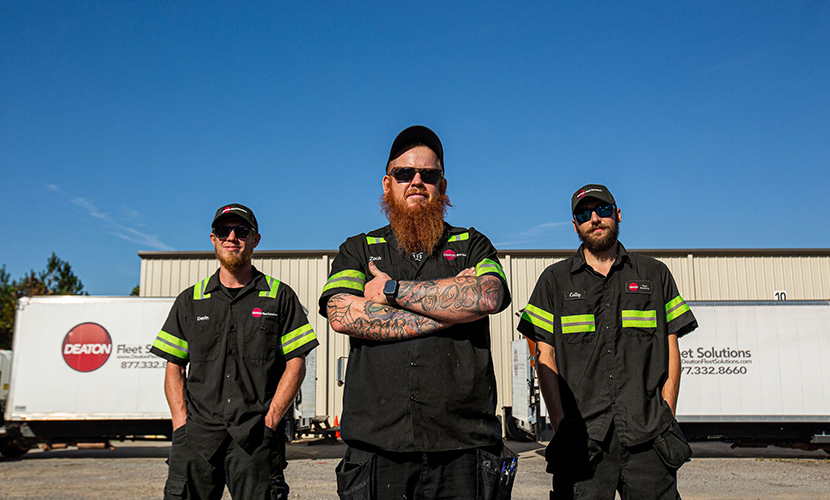
You need enough staff to handle everything comfortably, with leeway in case of injury or illness leading to unexpected short staffing.
“Regular maintenance only works when it’s done thoroughly. That means you need a team in place that has the time and ability to follow your preventive maintenance schedule to the letter. Can you realistically handle this ongoing task with the resources you currently have? Or do you need to consider additional assistance?” – Fleet Maintenance
If that means you need to hire additional mechanics, shop management, or low-level staff, so be it.
If it means you need to invest in software to better manage your fleet schedules, that’s also a good idea.
Whatever the case may be, a solid maintenance team is the backbone of an operational fleet.
Find Local Maintenance Support
Anywhere you’re located, you’ll need fleet support.
Doing everything in-house works for small-scale operations with centralized locations, but the larger your area of operations, the larger your distribution, and the larger your fleet, the more you can benefit from partnering with an organization to provide some of your preventative maintenance services.
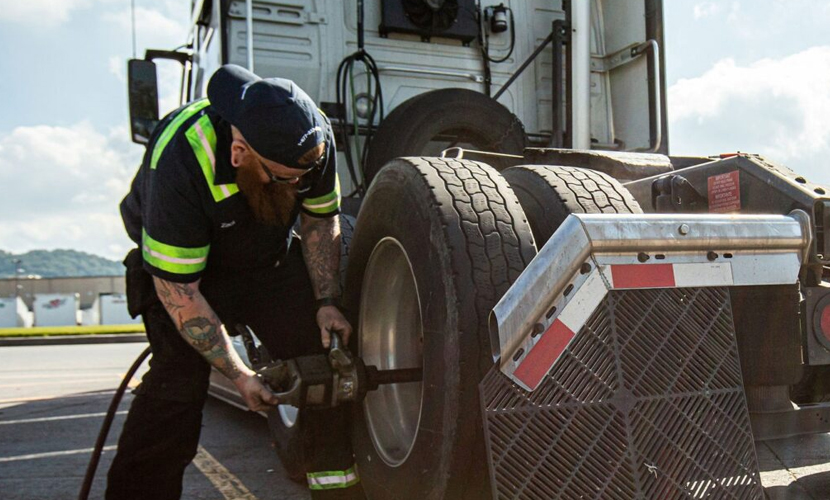
This can range anywhere from having a dedicated partner for fleet oil changes to working with a third party for virtually all of your maintenance tasks. In both cases, we’re here to help. Our nationwide network of maintenance professionals and brands ensures that, no matter where you are, there’s a service center near you.
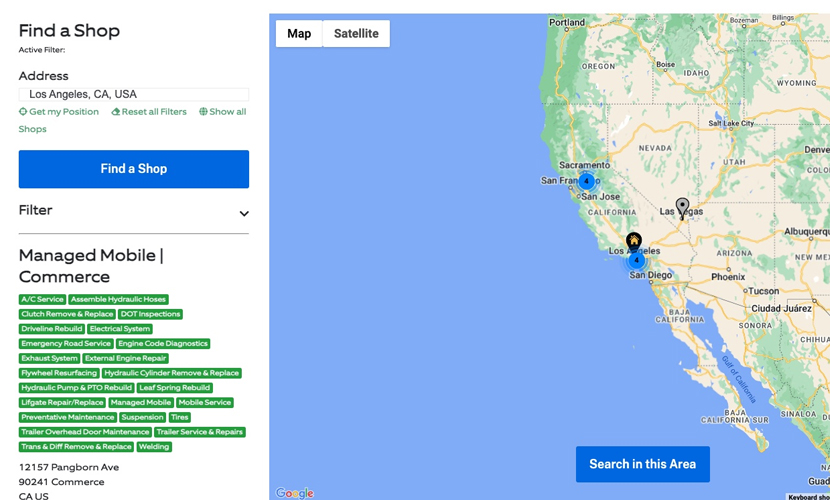
Whatever your needs, we have services for you. Simply contact us to work out what your fleet needs, what you need outsourced, and how we can provide top-quality services for you to keep you operational.
